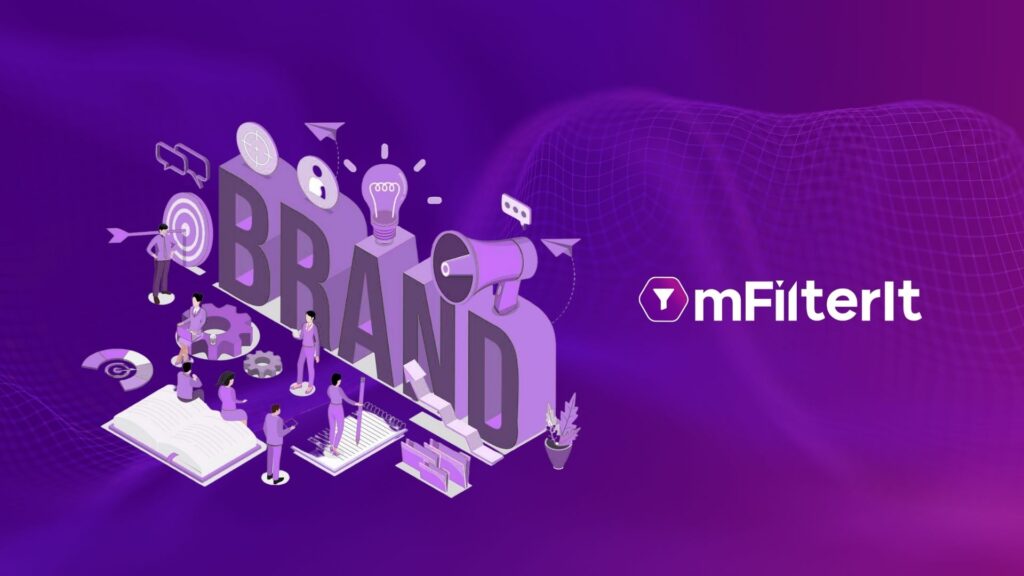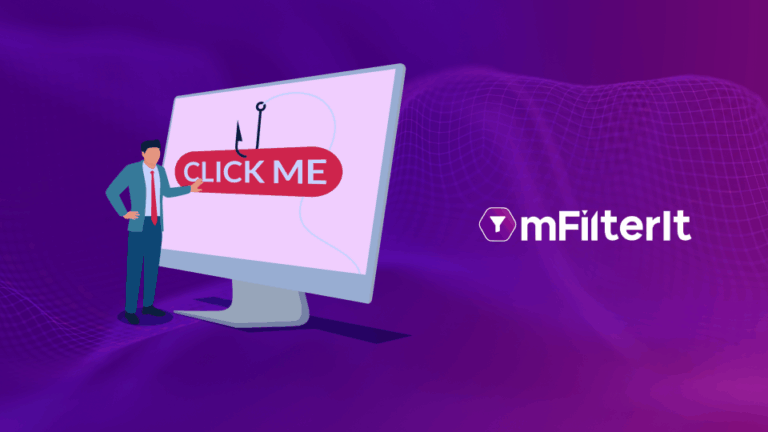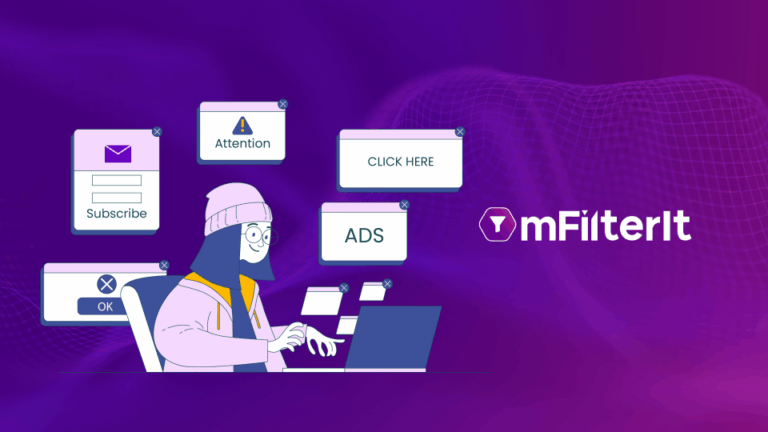Think your ad is safe just because it’s viewable? Think again.
According to the standards set by the Interactive Advertising Bureau (IAB) for measuring viewability, for an impression to qualify as a view, at least 50% of the ad must be visible on the screen for a minimum of one second.
Based on these criteria, your brand ads might be showing up on premium websites. But are you sure you are driving the genuine audience to your dashboard even after your ads show up – and show up beside those perfect placements?
What if 40% of your views are still fraudulent? What if the metrics are still being skewed by the bots?
This is the uncomfortable truth: viewability doesn’t equal validity; it does not tell how well an ad is performing as safe-looking environments can still host fake engagement, ad fraud, and brand damage.
Ensuring brand safety solution after the ad is served is equally important as ensuring the ad is being served alongside safe and relevant content.
This will only happen when marketers start leveraging the right set of technology and brand safety solutions and ask the right questions like – Who saw the ad? Was it even a real person? Did it drive real action?
It’s high time that marketers and advertisers get out of the illusion loop. Let’s discuss how.
Brand Safety Starts with Smart Placement, But It Can’t End There
Brand safety begins the moment your ad is about to be served. However, the concept of brand safety has evolved and so should your strategy.
Today, your campaigns don’t just run on websites. They appear across YouTube videos, OTT platforms, in-app environments, gaming platforms, influencer content, and more based on business requirements and individual campaign goals. That means your brand can easily end up next to content that’s contextually inappropriate, emotionally misaligned, or subtly harmful, even if it passes through basic checks or domain filters.
That’s where modern AI & ML-based brand safety tools help.
- These tools don’t just block offensive content; they analyze the tone, sentiment, and contextual relevance of the content around your ad.
- They ensure your ad doesn’t appear next to misinformation, low-value sensationalism, or emotionally charged material that’s off-brand or reputation-damaging.
Whether it’s a pre-roll ad on YouTube, a banner in a news app, or an OTT streaming ad, the emotional environment matters just as much as the content category.
But here’s the crucial truth: ensuring safe placement is only the first step.
An ad could be placed in a brand-safe, high-relevance environment, but still be viewed by bots, clicked by click farms, or engaged with inorganically. That’s why brand safety must extend beyond placement and viewability metrics to validate what happens after the impression is served.
Beyond Safe Placement: Breaking the Illusion Loop with Full-Funnel Protection

Now imagine this:
Your ad is placed beside high-quality, sentiment-aligned content on YouTube or an OTT app. It gets great viewability. Attention metrics are up. Engagement looks strong.
But something is still off.
Sales don’t add up. Audience retargeting campaigns underperform. And further analysis reveals:
- Most views were bot-driven or incentivized traffic
- Clicks were generated by fraudulent devices or repeat clickers
- Installs were inflated by click injection and SDK spoofing
Even the most brand-safe placement means little if the traffic and conversions aren’t authentic.
This is the Illusion Loop – a pattern where campaigns appear successful on the surface, but deeper layers reveal fake engagement, invalid traffic, and misleading performance metrics.
And the danger?
Marketers trust these metrics and reinvest in the same environments, audience profiles, or creatives, unknowingly feeding back into the fraud loop.
That’s why a full-funnel brand safety advertising strategy is as critical as smart placement.
Why Brand Safety Requires a Full Funnel Protection Approach?
To break the illusion loop of misleading campaign performance, brands must embrace a full-funnel brand safety approach, one that doesn’t stop at placement but verifies every stage of the ad journey, from impression to engagement to conversion.
Here’s how it works across the funnel:

This end-to-end approach not only ensures brand protection but also restores data integrity, helping marketers make decisions based on authentic engagement, not vanity metrics.
Brand Safety as a Performance Enabler
The shift to full-funnel validation also reframes the purpose of brand safety. It’s no longer just a way to avoid risk; it’s a way to unlock better campaign performance.
When your ads are seen by real people, in the right context, and drive genuine engagement, the benefits ripple across your marketing strategy:
- Better ROI: Ads reach real people who are more likely to convert.
- Smarter Optimization: Campaigns scale based on clean, verified signals.
- Audience Integrity: Retargeting pools stay high-quality and human.
- Brand Trust: Your ad shows up in the right emotional and contextual environments.
When you combine placement integrity, audience authenticity, and conversion validity, the right brand safety strategy becomes a growth lever, not just a checkbox activity.
How mFilterIt Powers Full-Funnel Brand Safety Across Channels
At mFilterIt, we provide end-to-end brand safety and fraud detection built for multi-platform media – covering web, mobile, YouTube, OTT, and app environments. Here’s how our full funnel brand safety approach helps:
Pre-Bid Intelligence
- Our brand safety solution scans ad environments for context and sentiment, not just category.
- Blocks unsuitable inventory across OTT, CTV, YouTube, and apps, beyond traditional keyword filters to ensure only safe placements make through the filters.
Post-Bid Traffic Validation
- Detects bots, IVT, data center traffic, and engagement farming across platforms.
- Applies device fingerprinting and behavioral anomaly detection to spot fake interactions.
Conversion & Install Fraud Protection
- Validates leads, installs, and actions to ensure real outcomes, not just numbers.
- Protects from click injection, fake installs, and SDK spoofing, especially critical for app campaigns.
Campaign Optimization with Deeper Intelligence
- Identifies and blacklists bot-driven traffic sources
- Conducts ad placement analysis for contextual and emotional relevance
- Flags ad delivery issues like frequency capping violations or suspicious delivery patterns on MFA sites
- Helps brands optimize performance without wasting spend on invalid impressions or misaligned placements, improving media efficiency.
Cross-Channel Brand Monitoring
- Tracks brand presence across YouTube, OTT platforms, mobile apps, and websites.
- Flags unsafe placements, impersonation attempts, and contextually misaligned associations.
- With mFilterIt, brand safety becomes continuous, contextual, and conversion-driven.
Conclusion: Brand Safety Isn’t a Checkbox, It’s a Competitive Advantage
In today’s high-speed, multi-platform media landscape, relying on basic viewability metrics or pre-bid filters alone is a costly mistake. Your ad might appear in the right context, on the right platform, but if you don’t validate who’s engaging, how they’re engaging, and what happens next, you’re still flying blind.
True brand safety isn’t about looking safe. It’s about being certain.
mFilterIt gives you the visibility, validation, and control to break out of the illusion loop and turn brand safety into a performance and growth lever.
Ready to stop guessing and start verifying?
Get in touch with us to learn how mFilterIt’s full-funnel brand safety solution helps you protect your brand, optimize campaigns, and drive real results across channels.



